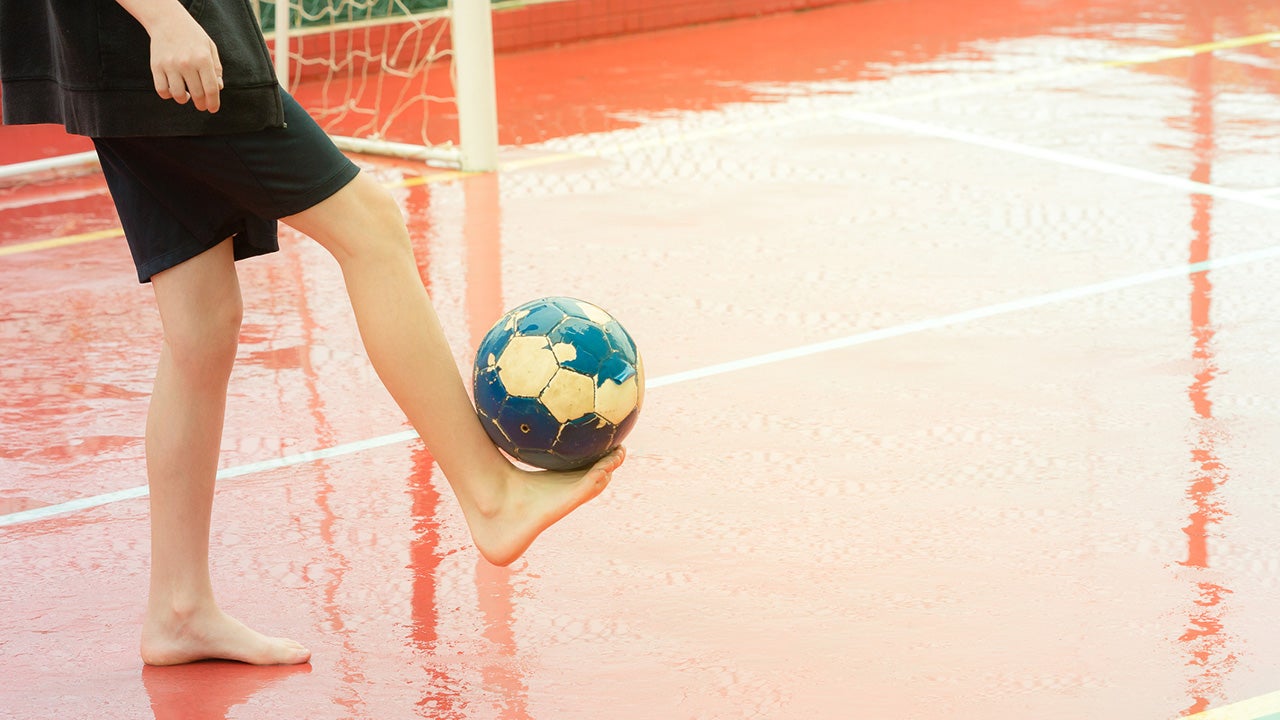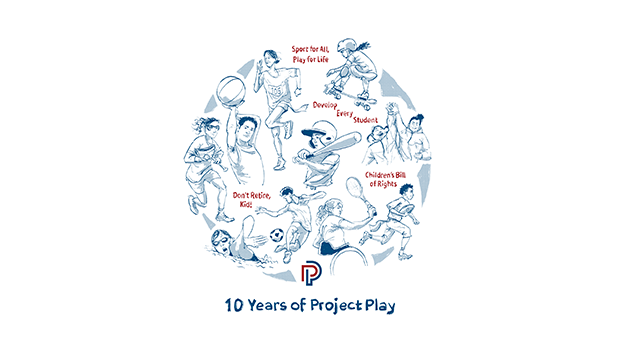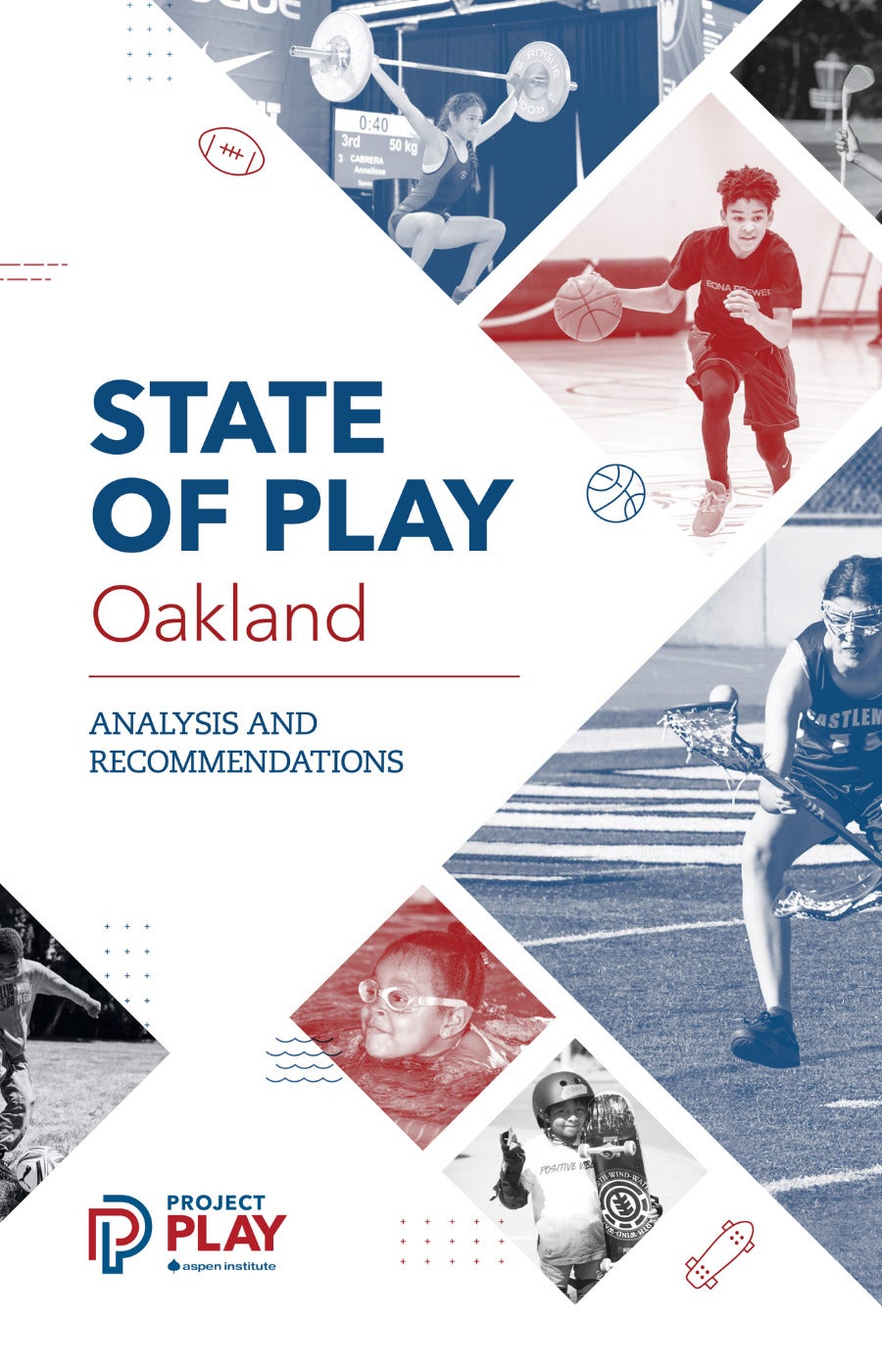Adam Silver is done with one-and-done. The National Basketball Association commissioner wants teams to be able to draft players right out of high school, at age 18, down from the current minimum of 19, a requirement that ends up forcing prospective NBA players to enter college for just one season. He calls it the “right thing to do” and hopes the players’ union agrees in the next labor negotiation.
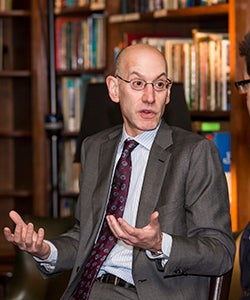
Adam Silver
“It may be the case that it’s in all of our interests that we start impacting with these young players, especially because in our sport they are identified at such a young age,” Silver said recently, “and begin working with them on their development then, not just basketball skills but increasingly there’s a focus on their mental health, their diets, just helping them build character and all of the important values around the sport.”
Great. Do away with the current charade. Do it yesterday. But also ask a crucial question: What should the league do to help develop athletes in the age group below that?
That’s the most important question, in the estimation of Mark Cuban.
“There is a difference between draft age and creating development programs,” the Dallas Mavericks owner told me by email.
Cuban is right. Eighteen is too late to start shaping lives and building the best possible future for the game. Players are technically adults by then, and those still playing are products of a dysfunctional grassroots system that can be likened to throwing eggs against a wall – and seeing which ones don’t break.
Young athletes today are asked to compete year-round between school and club teams, sometimes playing three games a day at summer tournaments. Maybe they get a brief break at the end of August. Then they’re back at it, often driven by coaches – more talent recruiters than athlete developers – with no training in basic, health-enhancing concepts like periodization or nutrition. The adults are incentivized to win, now.
It’s no wonder NBA rookies today get injured so often, and NCAA programs have seen an uptick in freshman arriving on campus with burnout. They are exhausted, their bones and brains compromised from the growing pressure to specialize in basketball at an early age and perform for adults, from website scouts ranking 8-year-olds to parents looking for ROI on the dollars and time allocated to travel ball.
In recent years, the NBA has tried to help the basketball ecosystem understand what good looks like in athlete development. The Aspen Institute program that I manage has tracked these efforts, as the NBA sits at our Project Play 2024 roundtable, a group of organizations that shares knowledge and works to build healthy children through sports. The league and its partner USA Basketball, the national governing body for the sport, have produced guidance on age-appropriate play, created a coach licensing program, and introduced the Jr. NBA Flagship Network, 18 best-in-class youth clubs that share their vision for how the game should be taught to boys and girls at the grassroots level.
These efforts matter in improving both the quality of and the sustained access to the game. But unlike in many European countries, the U.S. youth basketball landscape remains a highly disjointed space, with no real regulation and few mandates and incentives to compel adherence to best practices. Health and safety principles are easily ignored, as are the more holistic needs of youth. Too often, players reach adulthood without the life skills to succeed.
For Cuban, this represents a new opportunity for the NBA to provide essential leadership, starting but not ending with those prospects with the greatest chance to play in college or the pros.
“The key is taking a macro approach,” he said. “Making sure that you teach more than basketball skills. That school is important. That financial basics are taught. That if a player doesn’t progress to be able to participate at a higher level, there is still help available.”
New Models for Youth Basketball
So, how exactly to do that? Here are three options worth considering:
1. MLS club model
Major League Soccer requires each of its 28 clubs to have youth academies, just like clubs have in Europe. The academies aggregate much of the emerging elite domestic teenage talent and cover all costs for training. Parents pay nothing, which both removes economic barriers to entry for low-income families and disempowers overzealous parents. The coaching is top notch, with practice-to-game ratios controlled. Players exist in a professional environment, even those not under pro contracts. They forgo high school soccer but still go to school.
This year’s World Cup will highlight the success of the model. The U.S. men’s national team likely will be the youngest in the tournament, populated with players who helped their European clubs win major trophies. Many – including Tyler Adams, Brenden Aaronson, Weston McKennie, Gio Reyna, and others – came up through MLS academies. In fact, so much talent is now emerging from this model that MLS clubs received more than $100 million in transfer fees from foreign clubs this year, including $10 million from Chelsea for 18-year-old goalkeeper Gabriel Slonina.
European clubs don’t pay for basketball players like they do for soccer players, so the financial incentive for NBA clubs to invest in youth academies wouldn’t be nearly as great. Could incentives be created by providing rewards for developing prospects who end up signing with NBA teams? There are many potential carrots, including awarding additional draft picks, access to the draft lottery, or room to spend above the salary cap without paying luxury taxes.
Another question to work through: How to keep marquee clubs from hoarding all the top prospects? The MLS deals with that via the assignment of territorial rights based on geographic footprints that are agreed upon by team owners. For instance, D.C. United gets first dibs on prospects living within a 60-mile radius; if another club wants to train a player in United’s territory, that club needs permission – and likely will have to provide some sort of compensation to United.
Still, incentives shape behavior. MLS clubs are encouraged to invest in their local prospects via the Homegrown Player Rule, which allows an academy player who advances to the senior team to not count against the team’s salary cap. If you’re a Washington Wizards fan, living in a basketball-rich area that produced Kevin Durant, your mind is boggling right about … now.
One concern that I’ve heard when floating the academy model to people in youth basketball is that it could discourage participation in AAU and other club teams, with players not selected for academies quitting the game altogether, their NBA dreams seemingly dashed. That’s a possible problem, though it’s also worth noting this hasn’t happened in soccer. Even in MLS markets like Dallas, home to the franchise that has produced the most pro talent, the travel soccer scene has only grown. There still are college spots to play for, plus all the social benefits that come with being on a team.
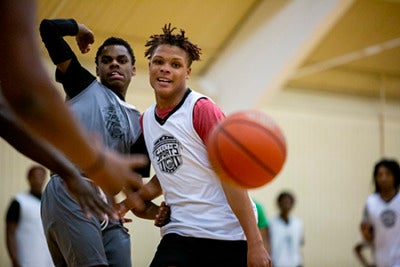
Ohio basketball players
Other questions involve the NBA’s media and athletic apparel partners. Would ESPN be more interested in the broadcast rights to Knicks U17 vs. Nets U17 than Oak Hill vs. Link Academy? Would Nike, Adidas, and others partner more effectively with NBA clubs hosting youth academies than they would with AAU teams?
Plenty of longtime basketball observers will tell you that team-affiliated youth academies are just not possible. There’s too much to think through, too much to negotiate, too much change involved.
On the other hand, MLS has figured it out – as have the European clubs that have now delivered a couple generations of NBA stars, from Tony Parker to Luka Dončić to Giannis Antetokounmpo.
2. League-owned academy model
This would be a U.S. version of what the NBA is already hosting in other countries. Since 2016, league-owned residential academies have opened in Mexico, Australia, Senegal, and India to train top international prospects starting at age 15. Again, players go to school and have access to quality coaches. Alumni include recent NBA lottery picks Josh Giddey, Dyson Daniels and Bennedict Mathurin.
The NBA had a residential academy in China as well but shut it down after reports of abuse by Chinese coaches at the government-owned facility. Lesson learned: Don’t let partners on the other side of the world control the product delivery.
That should be less of a problem if a league-owned academy were to be introduced in the U.S. Alternatively, to keep players closer to their families, academies could be created in, say, four to eight regions, with all costs and benefits shared equally by the clubs.
Domestically, the closest thing we have to this model is Overtime Elite. The digital media company began recruiting top prospects to Atlanta last year, luring them with six-figure salaries to play in its small, fledgling league. On balance, the experiment has shown promise, even as it’s not set up as an academy focused on long-term development. Overtime’s goal is to get valuable social media assets, and the players get attention paid to health and education needs that in some cases, its founder says, have gone ignored.
“We do a full physical,” said Dan Porter, CEO of Overtime. “We found a life-threatening ailment in one player. We get Advanced Placement students who were able to take advantage of what was offered to them, but also students who were never challenged in school at any level. The system hasn’t worked for them. Working with us and sponsors who believe in what we’re doing, we can build an amazing media product that generates the revenue to invest in analytics and performance and which affords all our players the chance to achieve their full potential.”
If the NBA created its own academy or academies, it would need to demonstrate a sincere commitment to the holistic development of the minors in its care. That includes transition plans for prospects who inevitably cycle out; for example, it could provide one year of college tuition for every year spent under contract with the team. The league has a reputation to protect, more than any entity on the grassroots circuit that talent passes through today.
It’s that aversion to bad headlines that also makes the NBA a candidate to lead. Any league engagement should bring standards and accountability to a landscape short on both – and become an opportunity to model the change that can improve lives.
3. Bolstered support model
This would be the least disruptive of the three options and could take many forms. Generally speaking, it involves top prospects continuing to play for their high school teams and with their club teams during the spring and summer. But the NBA would get more involved throughout the year.
That could mean a partnership with the most reputable prep schools that currently dominate the top of the national rankings. Or a deeper relationship with Nike’s Elite Youth Basketball League, through which most NBA draft picks currently pass. Or an expansion of the Jr. NBA Flagship Network, with additional administrative support for clubs to embrace best practices. USA Hockey, with NHL funding, went this route a decade ago when it introduced the American Development Model, hiring regional managers to work with clubs in their areas.
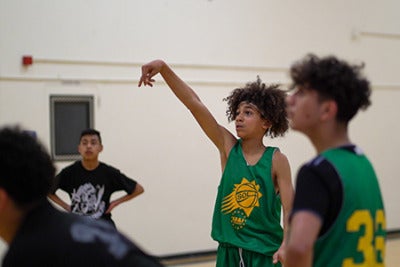
Oakland basketball players
Brian McCormick, an American basketball author and former club coach in six countries, proposes adding a full-time coach developer to any NBA franchise with a grassroots youth program. “Pay one person a professional salary to oversee 30 to 50 coaches and to go out to other local sites to give clinics,” he says.
That idea would be an extension of an initiative the NBA is now putting in motion. In November, the league plans to launch “Jr. NBA Leagues” in 11 cities to help teams from existing youth programs – schools, YMCAs, Boys & Girls Clubs, and the like – improve the quality of local, low-cost leagues. Kids get to play in NBA- and WNBA-branded uniforms, and coaches get access to the NBA’s digital training tools.
That’s an entry-level intervention. McCormick says there’s a need to do more with the next age level up, which would be players of high school age. The league’s main activation there is support for the youth national teams formed by USA Basketball. The teams gather up to five times a year, including twice for camps where life skills are taught. Players get virtual support the rest of the year from counselors and mentors but remain subject to the same load management and other pressures heaped on them by the demands of school and club teams. The next natural step there would be to make the program residential in order to better control their environment. But, even then, the program would continue to touch only a handful of players – 25 on each of the four teams from U15 to U18 – which is hardly large enough to disrupt the larger youth basketball ecosystem.
Soccer went down this path a generation ago, with its U.S. Soccer Residency Program in Bradenton, Florida, that gathered some of the most promising U17 players in the country. The program was shuttered in 2017 after mixed success.
Today, MLS engages a broad player pool. In 2020, it created MLS Next, a national program with 139 of the top clubs in the U.S. and Canada teams that was formed after the U.S. Soccer Federation stepped out of the space, citing pandemic-related budget cuts. MLS Next includes but is not limited to the academies paid for by MLS clubs and starts at U13. Participating clubs get the benefits of MLS branding, along with coach training, parent education, and DEI resources. They operate within a competition structure focused on training and quality matches, with four national events per year.
The arrangement helps the MLS shape the landscape with its ideas around proper development. This year, MLS added an additional layer, MLS Next Pro, for 21 clubs with professional players; it will grow to 28 in 2023.
A Trigger for Change
In basketball, the trigger for a paradigm shift in the development model could be an outside force – name, imagine, and likeness (NIL) legislation. At least a dozen states now allow high school athletes to secure sponsorships, the downstream result of new laws allowing college athletes to market themselves like any other student.
Some parents of grade-school students already are angling for payouts, treating their little ballers like emerging brands and driving them hard in training sessions. Such behavior creates questions about economic exploitation and will need to be dealt with, just as Hollywood drew up labor rules to protect child actors.
The human rights of children must be respected by all adults, regardless of the sport setting they are in (see the Aspen Institute’s Children’s Bill of Rights in Sports framework drafted last year and a Centre for Sport and Human Rights white paper released in May that offers recommendations for government and sport bodies). Even when minors are paid, their access to education, health and safety, agency, and other aspects of a quality childhood must be foundational.
By itself, NIL is not a problem. The challenge for basketball stakeholders is to develop rules, expectations, and perhaps laws that ensure the best interests of children prevail and that each child is treated as a person first and an athlete second. Indeed, with sufficient protections, NIL could serve as a force for good. As Cuban notes, “With NIL and players getting paid in high school and college, it’s feasible to work with younger players and have them remain eligible for high school and/or college teams.”
The possibilities will expand if the National Collegiate Athletic Association further adjusts its constantly evolving definition of amateurism. Right now, athletes compensated by professional clubs, even if paid only $1, are deemed ineligible. We need a model with more flexibility so players developed within an MLS or NBA academy can still play in college if they lack the talent or motivation to move to the highest level of competition.
That change could be forced by the courts or the business of college sports. As conferences and the NCAA look to deliver value to media partners in an era of 10-figure broadcast contracts, will they come to recognize the upside of making room for the best available athletes?
NIL, Overtime Elite, and the MLS model are opening the door to new ideas. As they take hold, Cuban believes that they will change “the definition of eligibility for scholastic and collegiate sports, which hopefully will allow the NBA to be more involved with kids and improve rather than eliminate the ability to get scholarships.”
The Bigger Picture
Of course, the NBA could also just stay on the sidelines. Today, high schools, summer teams, apparel companies, parents, and NCAA schools collectively pick up nearly all development costs for future league talent. Sure, many elite players are lost along the way, but those that survive – from Chris Paul to LeBron James – have powered the growth of the game.
Then there are the many headaches that await anyone proposing major changes to the status quo – especially if AAU and other entrenched interests struggle to see how they will benefit from a shift. The last time something similar was attempted, when the NBA and NCAA created a joint venture dubbed iHoops in 2010, it failed almost immediately due to a lack of any real plan or commitment to systemic change.
So how hard should the NBA push for grassroots change now? Which of the three models, if any, described above make sense for the league to pursue?
The answer depends on how the league sees itself in the greater basketball ecosystem. Beyond marketing its franchises and producing entertainment, how much does the NBA want to steward a game that is played by more Americans than any other? What responsibilities does the league have as the driving force behind USA Basketball – an organization whose mission, as with all national governing bodies, is to grow the sport? How best to live out the league’s values, which include making a positive impact in communities everywhere?
Asked to comment on this piece, the NBA shared a statement from David Krichavsky, Senior Vice President, Head of Youth Basketball Development: “The NBA is continuously evaluating how we can best support the youth and elite basketball ecosystem through practices that foster positive and healthy playing experiences and development.”
There is a bigger picture, as Silver knows. And other stakeholders to consider.
Take the young people of Camden, New Jersey, where the Philadelphia 76ers have their training facility. Two years ago, the Aspen Institute landscaped the state of play for children there, with the support of the Sixers Youth Foundation. Camden suffers from deep poverty, and most students do not get the physical activity they need. Our study found that basketball is the sport in the highest demand, with more than six in 10 kids having played the game and another 21 percent wanting to try it.
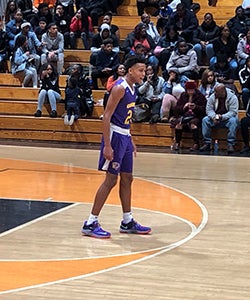
D.J. Wagner
This year, Camden High School won the boys’ state championship. But local boys had limited access to that team. Seven of the players came from all over the state, including the nation’s number one recruit in the class of 2023, D.J. Wagner, son of former NBA player and Camden High legend Dajuan Wagner. The athletes had played together on a summer AAU team and qualified to transfer into Camden only because a recruiting loophole was exploited; that exploitation is now the subject of a state investigation.
Players with the caliber of Wagner need an alternative pathway to the NBA. And those who aren’t just need a place to play, in schools or otherwise. “From my perspective, anything we can do to get (the NBA-focused athlete) out of high school basketball would be good,” Colleen Maguire, executive director of the New Jersey State Interscholastic Athletic Association, told me. “We’re here to serve the average kid who wants to play school sports for fun.”
Building a more coherent basketball ecosystem for all won’t be easy. But the opportunity is emerging to do so – and for the NBA, as the alpha in the room, to drive that conversation.
Join the Aspen Institute on Sept. 20 (11:30 am-12:30 am ET) for a discussion on this topic. Register here for Future of Sports: NBA Player Pipeline. Speakers include former NBA All-Star Pau Gasol.
Tom Farrey is the founder and executive director of the Aspen Institute’s Sports & Society Program, whose main initiative is Project Play. He also is the author of Game On: The All-American Race to Make Champions of Our Children (ESPN Books). He can be followed @TomFarrey.
This piece was originally published in Global Sport Matters as “The NBA Wants to Lower its Age Limit (Again). Here’s What It Can Learn From Other Global Sports.”
